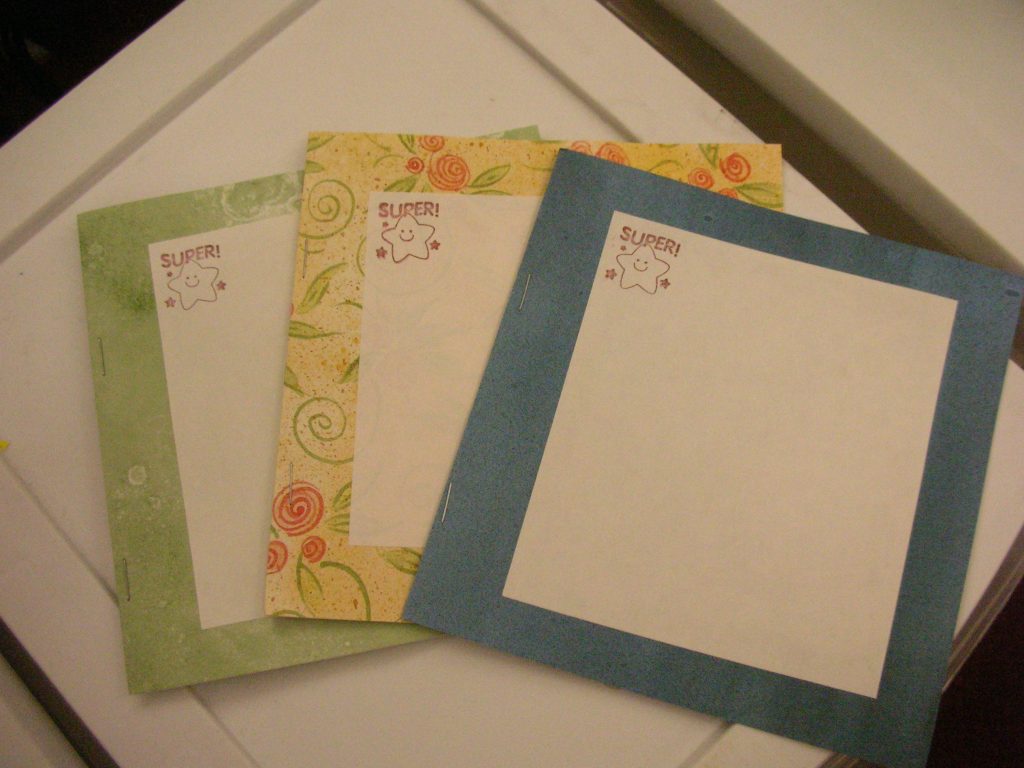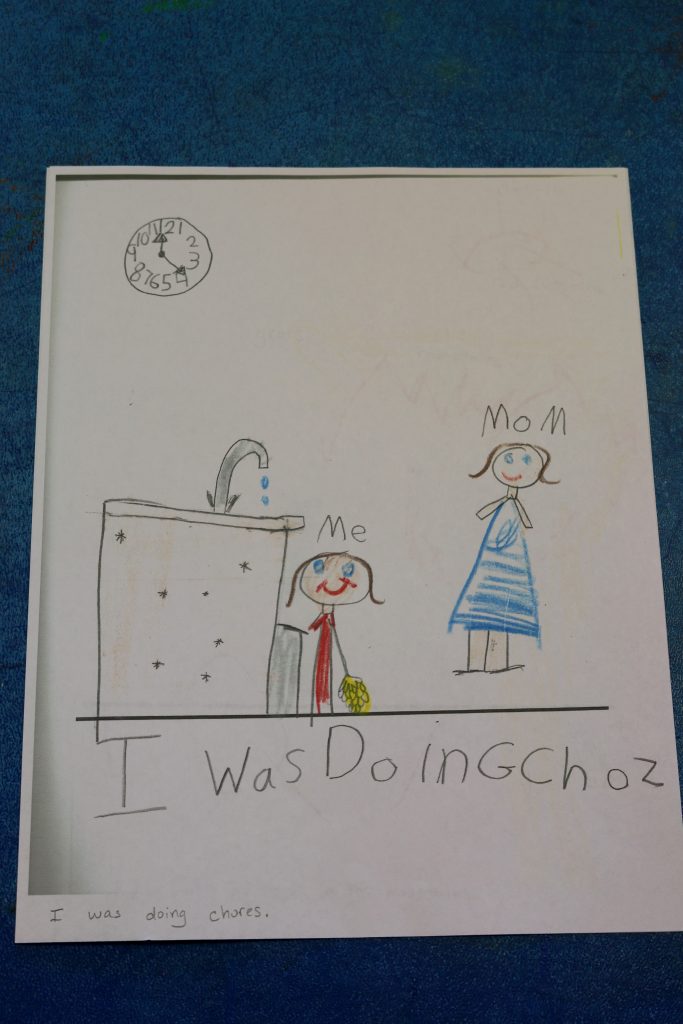At the beginning of kindergarten, I usually start kids off with blank paper, so they can explore. I let them play around with crayons, markers, and colored pencils. Some kids have lots of experience with these materials, while they are new to others. One tool I love to introduce is Rock Crayons. They are the perfect size to introduce proper pencil grip.
Once kids have had a chance to draw some pictures and verbally tell their stories, I start adding blank books with 4 pages.

I make books out of scrapbook paper and blank pages inside. I always put a stamp or sticker in the top left corner of the book. I tell kids that they need to make sure the stamp is smiling at them. This helps kids know which direction the book needs to go. It also trains their eye to start at the left when they are starting to write words.
Soon after blank paper and art supplies are introduced, we add a paper with a single line. On these papers we show kids how to tell a story through their drawing and model having the picture go at the top of the page and save the space below the line for words. In the beginning kids will only draw pictures. As we introduce letters, letter formation, and sight words, kids may start to scribble below the line. Then, they will start writing random letters, and eventually start to write recognizable words. I don’t correct spelling at this point. We just say the word slowly and write any letter sounds we hear. In the beginning, they may only have one letter below the line. That’s ok! Learning to write is a process that kids work through.

I absolutely LOVE highlighted writing paper. You can buy this paper or you can also print your own.
The highlighted part helps kids focus on where letters fall on the line.
Finally, we introduce simple lined paper. Towards the middle and end of kindergarten, kids don’t need quite as much support with keeping their letters in the lines. It’s important to note that the most important thing about writing is getting ideas from your head to the paper and then the ability to tell your story to your audience. As the year goes by, we point out that the audience isn’t always your classmates or teacher. Students may want to take the writing home to share with parents, so it’s important that we use neat writing so they can read the story. This is where lined paper comes into play, but kids have also had an enormous amount of time to simply draw, tell stories, and label parts of their pictures.
If you would like to download these writing papers, just click on the picture. If you are interested in learning more about writing in early childhood, please check out my mini-ebook on Writer’s Workshop in kindergarten.
Happy writing!